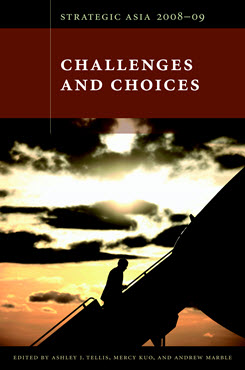Partnering with India
Regional Power, Global Hopes
This chapter examines India’s expanded power and international role and draws implications for U.S. policy.
EXECUTIVE SUMMARY
This chapter examines India’s expanded power and international role and draws implications for U.S. policy.
MAIN ARGUMENT
With a booming economy, an increasingly trade-driven foreign policy, an expanding footprint both in Asia and on the global scene, and strong relations with the great powers, India’s strategic horizon is generally positive. The U.S. is India’s most important outside friend, and the new relationship between the two countries is based on important common interests, especially in Asia and in Indian Ocean security. Yet at the same time India’s foreign policy outlook rests on a strong political commitment to “strategic autonomy”—avoiding even the appearance of undue outside, and especially U.S., influence on its policy. U.S. experience with partnerships, however, involves mainly working with junior partners. This disconnect complicates the task of developing the U.S.-India partnership.
POLICY IMPLICATIONS
- The partnership between India and the U.S. will be most effective if they develop a new model for selective cooperation, one based on their common interest in the security and prosperity of the region extending from the Persian Gulf to the Pacific Ocean. The two states have developed strong bilateral ties. They can now begin to develop a common view of the world, or at least of the areas where their interests are close.
- For the U.S., India is a key element in the emerging balance of forces in Asia. A larger Indian role in Asian regional integration and global governance would suit both countries’ interests.
- The biggest danger to U.S.-India cooperation in advancing Asian security would come from U.S. military action in Iran.
Strategic Asia
The Strategic Asia annual edited volume incorporates assessments of economic, political, and military trends and focuses on the strategies that drive policy in the region. Learn more about Strategic Asia.


